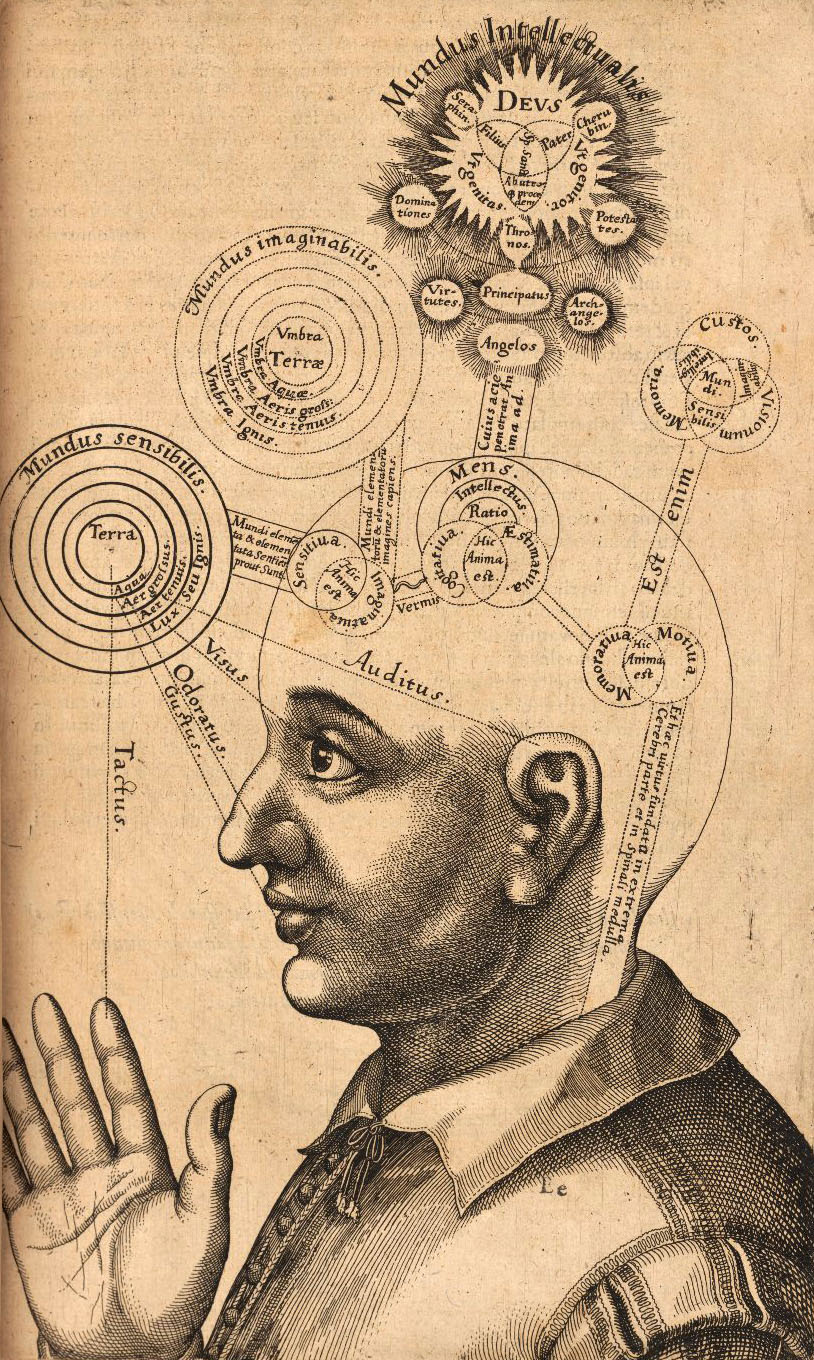William Desmond, The Intimate Universal: The Hidden Porosity Among Religion, Art, Philosophy, and Politics. Columbia University Press, 2016. 520 pages. ISBN 9780231178761
Illustrating the constrictions of the received metaphysical legacy, the intimate as a universal seeks a space between the typical contrasts of the notion of particulars and universals, or the immanent and transcendent.
Desmond attempts to move beyond the forever philosophical conversation of those relations. Being is placed as a vested ontological relation that is greater than a link between individuals within the public sphere, while arriving at its truest articulation in and as an agapic communal posture. This relationality may not appear as a unique claim per se, but it is robust as an anthological approach preserving the whole whilst sustaining a tangible place for the individual in their irreducibly intimate and universal reality, i.e., what Desmond interprets as a shared porosity of being.
The proposal is a means to not fall prey to accepted binaries or to fashion the concrete without dismantling the universal whole which otherwise results in the negating of a shared community. In this regard, it gives voice to the particular over what he deems as the Aristotelian stifling of immanence or the nominalistic collection of particulars which in his view are found wanting in their communal universal expression. This preserves what is proper to each and the other, and steers clear of that void of universality that often absorbs the individual into the relational.
Then in his schema the defective dualistic Platonic ideas and those wholly transcendent idealic universals are positioned against the intimate universal which recognizes concrete individuation and abstract universality not just as poles, but allies which can permeate what they contain as brackets. The intimate universal seeks that which is “closest to the fecund matrix of significance in relation to what is often called [the] sense of the whole [understood] as our being in the between” (7). Desmond sets out to retain a transcendence without the ‘putting out into the open’ of universality and to concretely maintain an imminent intimacy by escaping the ‘pitching of the tents’ in any particularity.
It is specifically this ‘space between’ that Desmond has been sculpting throughout his career, particularly the being in between which is that ‘sense of the whole’. This publication is a continuation of that effort. Emerging from the process is the immanent being, never opposed to the transcendent, encapsulating both poles that share a Hegelian dialectical whole. The metaxological then, a now familiar neologism that is other-related by necessity, avoids the taint of a Platonic duality of differentness.
In this regard, porosity offers a unity of the same whole and a doubling of interiority results in a universal that is concurrently wholly intimate. Consider that without such mediation the “dictatorial thinking [of] the superimposition of the universal on the particular” (119) would be without power to contend rightly with the merely private unrepeatable singulars. This error overcome by Desmond, reveals the hidden “space of open porosity that is at the heart of living communicability” (133) as an intimate being in-between, perhaps against the rationalists’ zeitgeist, but best buoyed in a religious expression.
The Intimate Universal is part of the “Insurrections: Critical Studies in Religion, Politics, and Culture” series from Columbia University Press, edited by Žižek, Crockett, Davis, and Robbins. Realizing the capacity of religion to both obscure and disentangle elements of culture and politics, this work furthers that effort. This present composition of Desmond is set off in two nearly equal length sections under the headings of “Exoteric Reflections” and “Systematic Thoughts,” with parallels in each mirroring the title ideas of religion, art, philosophy, and politics with the agapic, aesthetic, erotic, and idiotic respectively.
In the beginning section, the intimate universal is determined in relation to religion, in terms of what he states as the cosmopolis and the ghetto as two contrasting, but not competing orientations. Following is the chapter on art and how it communicates neither imitation or self-creation, and with the third element of this section he seeks a sense of ‘doing justice’ that neither collapses into practice or to theory. With the final chapter of the first section, the metaphysics necessary for the self ‘to be’ a participation with the intimate universal stands against both disordered servility and the tyranny of sovereignty. Then, in the concluding half of the work on “Systematic Thoughts,” the ontological dimensions offer an emphasis turning to both being and human, which in lieu of those previously listed anthropological elements, embraces a more systematic than reflective analysis.
There is a vast span to Desmond’s project, so it is admittingly a strain to do justice to the near five-hundred-page argument in this short review, but the hope here is to offer a digestible approach while staying true to the flavor of the overall presentation. With that hope, a correlative comparison of each anthropological element across both sections may offer an intriguing taste to his effort while acknowledging the eisegetic risk of moving beyond the author’s intent. It is best to take into account that the reality these constitutive elements of the human person express lack compelling force if presumed to be mutually exclusive ideas.
With that proviso, in the first pairing concerning politics and the idiotic, Desmond sees the latter as a matter of the self keeping to itself. It is presented as an intimate affirmation of being arising “to gesture toward a strange universality that also, strangely, is not strange” (207), but a manifesting of that which is already present yet unawakened. This ‘idiot wisdom’ viewed in the political vein offers a “metaxological otherness [which] discerns in the very ontological robustness of immanent otherness and original communication of an even more radical otherness” (167).
As the in-between which one never left, this could be undone by an imposition of value on the other, or a ‘self-affirming will to be’ where the convergence of the intimate and universal is thwarted. Applied to the political realm, it is well known that revolutions if resting merely on an aversion to the status quo, tend to result in nothing more than a Nietzschean power reversal. So, where one ‘collective will’ rises above the other, a varietal host of intermediating elements sink from the whole; the family, academic associations, and agapeic communities among them, which then shrink from the political space, and lapse into webs of utility yielding to the replacing power. In opposition to such consequence, the intimate universal is both a self and a re-affirmation of being wherein the subversion or undoing of the other is not borne out.
In terms of philosophy, ‘doing justice’ for Desmond is prior to any theory or practice. He speaks of this under the guise of philosophical agendas, which even when acknowledged remain top-down and by their nature, dictatorial over the particular. Yet there is in his philosophy a crucial anthropological foundation requiring more than man; an Absolute perhaps even unrecognized or unnamed. Following this thought, if man were his own measure then politics would eclipse the ‘something more’ and mankind would become the measure of itself as some Protagorean paradox.
Here porosity is applied to the political in preserving from the human person the remoteness of the universal (the Absolute one wonders?) and the irrelevancy of the close-up relevance in a way that “doing justice is something intermediate for humans [where] before all agendas there is something received” (126). Add to this political power the erotic once freed from its Freudian drive, exposes a sovereignty afoot. This eros, rescued from the counterfeit, is not unlike the wooing of another for Desmond, which he finds proximate to the passio essendi. With the political others, this remains “faithful to the porosity of love, waiting in ‘patient readiness’ for the surprise of the other, the gift of the secret beloved” (235) and a condition of possibility. This provides an ample self-determinacy, though resting in theory, remaining unrealized and outside of justice without a relational other.
Thirdly, the aesthetic has something to say and not unlike the political element, it is community oriented. Comparable to the political other it possesses a readiness in patience to receive. Art retains that power to circumvent a closed immanence via its communitive yet confusing nature. Desmond calls this confusion “a generative con-fusio—not the vanishing of difference but the fusion with, fluency with, the selves and the others” (61), and comparably connects the aesthetic to the sensible human body and the earth; notice how ‘human’ and ‘earth’ cannot be poles.
Here, being is in a surplus-determinacy. And like the magnificence of art and its ability to ‘stop one’ in their tracks and force the gaze, in this ‘imaginative selving’ of sensitivity “the birth of surprise comes in, comes over a process of self-determination…[as] something other eventuates in this birth” (259). The imaginative aspect of the aesthetic forwards a porosity to the other and a space of hospitality forms as each are birthed with (ruah), as the whole exceeds the particulars.
Finally concerning agapeic religion, though presented here last Desmond thought it primary as “being religious carries something of the richest resonance of the intimate universal” (23) and therefore for him it spearheads the text; for this review that prominence is confirmed by placing it as the capstone. He situates the universals in this regard between an imminent self-regarding holism and a theoretical groundless imposition of human thinking that is otherwise simply ‘out there’ by projection. Desmond claims it as impossible otherwise to establish apart from the purview of a personal God where “religion is neither for merely privatized subjectivities nor for objectivized generalities” (42) —he sees no parallel appearance or necessity for that matter in the philosophical concern for this distinct strain of agape where one does not bind (re-ligare) the divine and human to form community.
Yet even in the Augustinian dual cities of man and God, the condition of the between is not clear as each ‘city’ is part of each, and to usurp one over the other results either in idolatry or bondage. He deduces that “the consummation of the intimate universal [is] the religious kononia…[where] gifted by a surplus generosity, ultimate in itself and calling human beings to imitate and enact this generosity in finite life” (416-17) this mutual porosity surfaces as the engendering social bond.
In closing, it is noteworthy to appreciate that in the front matter of The Intimate Universal, Desmond includes as an epigraph the passage from the Gospel of Matthew 13:51-52, which reads, “’Have you understood all this?’ They said, ‘Yes.’ And he said to them, ‘Well, then, every scribe who becomes a disciple of the kingdom of heaven is like a householder who brings out from his storeroom things both new and old.’” Desmond stayed close to that parable.
Stephen Bujno is an artist who is currently Doctoral Researcher in Political and Social Thought at the Global Center for Advanced Studies in Dublin, Ireland.
Featured Image Credit: Dhruv Weaver on Unsplash




